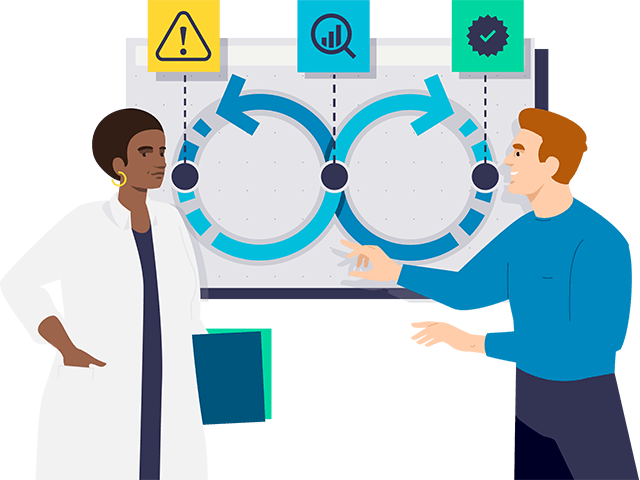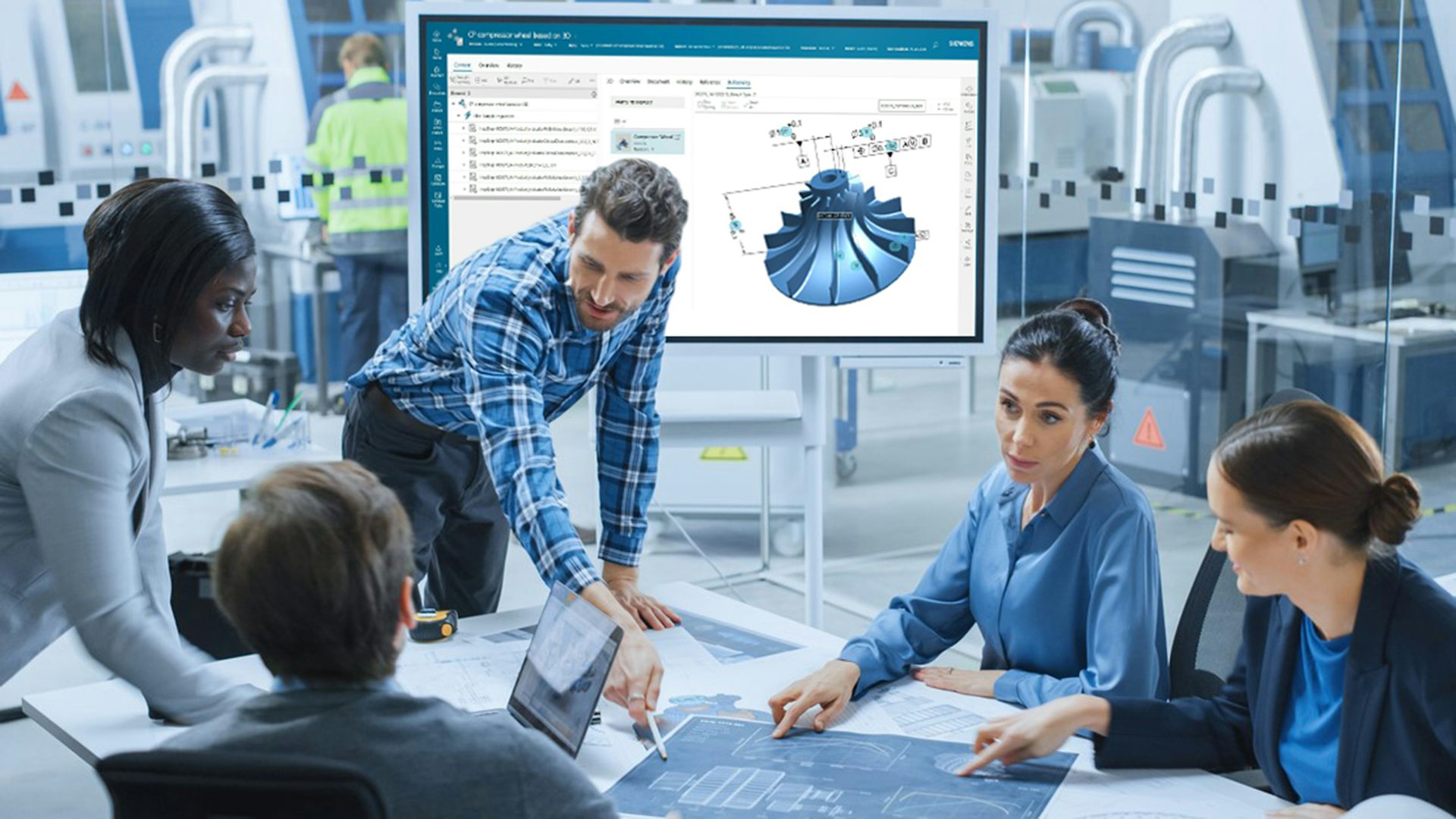Zarządzanie jakością umożliwia odniesienie sukcesu
Wdrożenie procesów zapewniania jakości i zgodności z wymogami w całym cyklu życia produktu przekształca złożoność w atut i minimalizuje zasadnicze ryzyko biznesowe.
Usprawnij stosowanie najlepszych praktyk planowania jakości
Zintegrowanie planowania jakości w fazie projektowania ma kluczowe znaczenie dla uzyskania przewagi konkurencyjnej. Dane inżynieryjne dostarczają informacji niezbędnych do skutecznego zarządzania projektami wysokiej jakości i pomagają ograniczyć ryzyko zarówno w odniesieniu do produktów wirtualnych, jak i rzeczywistych. Wykorzystanie systemów CAD i informacji PMI pomaga tworzyć plany kontroli w celu sprawdzania kluczowych elementów podczas produkcji. Sztuczna inteligencja zwiększa efektywność inżynierii jakości i planowania.

Osiągnij wymaganą jakość zaopatrzenia i produkcji
Dostarczaj produkty wysokiej jakości dzięki dostosowaniu procesów zaopatrzenia i produkcji. Monitoruj dostawców surowców i komponentów, aby weryfikować przestrzeganie umów i zapewnić dostępność zasobów wysokiej jakości. Ułatwiaj realizację produkcji dzięki stosowaniu standardów jakości i najlepszych praktyk. Pobieraj dane z hali produkcyjnej, aby uzyskać historię produktu, zarejestrować odchylenia i poprawić jakość.

Ciągłe ulepszanie jakości produktów i procesów
Rejestruj reklamacje i niezgodności zgłaszane zarówno przez źródła wewnętrzne, jak i zewnętrzne. Usprawnij proces ciągłego ulepszania dzięki analizie i rozwiązywaniu problemów związanych z jakością z wykorzystaniem centralnego procesu rozwiązywania problemów. Skróć czas reagowania i zmniejsz koszty zapewniania jakości, bezpośrednio łącząc procesy zarządzania jakością i zmianami.

Usprawnienie zapewniania zgodności ze standardami jakości
Wprowadź ustrukturyzowany system, zintegrowany z procesami zarządzania jakością i dostępny dla wszystkich użytkowników, w celu usprawnienia audytów zewnętrznych i wewnętrznych. Staw czoła trudnym wyzwaniom wynikającym z przepisów z pomocą zautomatyzowanych procedur zapewniania jakości i natywnej sieci szkieletowej PLM. Ogranicz ryzyko niezgodności, aby zapewnić wysoką satysfakcję klientów i chronić reputację marki.

Maksymalizacja jakości w cyklu życia produktu
Połącz system zarządzania jakością (QMS) i proces zarządzania cyklem życia produktu (PLM), aby stworzyć kompleksowe rozwiązanie zarządzania jakością z wykorzystaniem rozwiązania Teamcenter. Firma Siemens rozszerza zarządzanie jakością na dziedziny inżynierii i produkcji. Wykorzystując dodatkowe elementy portfolio firmy Siemens, oprogramowanie Teamcenter Quality umożliwia zarządzanie jakością w pętli zamkniętej, od projektu przez wytwarzanie po halę produkcyjną i z powrotem.

Zarządzanie procesami jakości w chmurze
Teamcenter X Quality to nasze rozwiązanie w chmurze, które pomaga rozpocząć pracę z wbudowanymi i wstępnie skonfigurowanymi najlepszymi praktykami zarządzania jakością w celu natychmiastowego uzyskiwania korzyści. Automatyczne aktualizacje ulepszeń produktów obejmują najnowsze ulepszenia procesów zarządzania jakością z różnych branż. Nasz przyjazny dla użytkownika interfejs ułatwia zarządzanie procesami jakości i zgodności z wymogami

Quality management for medical devices trial
No installation is required. Start designing in minutes.
